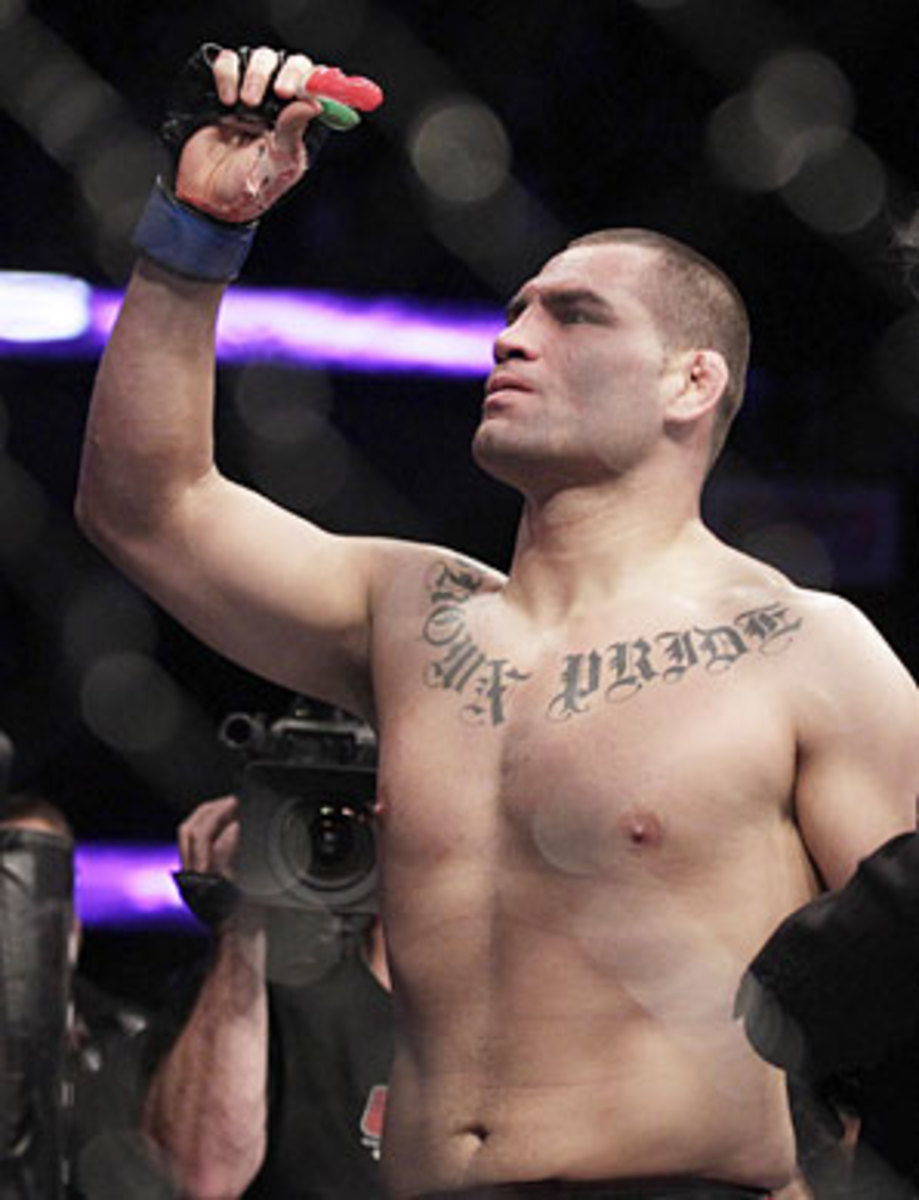Rash of UFC injuries not cutting into overall quality of fight cards


Cain Velasquez, Jon Jones, Frankie Edgar, Gray Maynard, B.J. Penn and Jon Fitch would, between them, make for the core not just of a sound fight promotion, but one that could compete head up with UFC. All of them were scheduled to fight this summer. None of them will; all of them are injured.
The main story here probably has to do with how young a sport fighting is. While not all of these injuries can be traced to athletes training too intensely, the broad plague of injuries likely can.
Not all that long ago, fighters in Japan trained while wearing pro wrestling style boots, and in Brazil they went full speed in routine sparring sessions. Watch Ken Shamrock walk, or look at Wanderlei Silva's face, to get an idea of the toll. Ten years from now, current training methods will seem nearly as primitive as the ones once employed by early Pancrase fighters do now. For now, hard training is leading to an astonishing number of torn muscles, shot backs and the like, and making life a misery for UFC's matchmaking office.
Intriguingly, though, it isn't clear that all the injuries are making for worse fight cards. Between the consolidation of talent and the constantly rising number of good athletes taking up the sport, UFC has been able to better weather the loss of a half-dozen top fighters than you might think. The summer of 2011 isn't going to be quite as nice for fight fans as it might have been, but it should be just as good as anyone would like.
Wanting to go by something other than my sense of things, I scored the main fights on every card that will take place from June through August, as well as those taking place during the same time period in 2010 and 2009, on a four point scale.
A title fight, title eliminator, or serious grudge match -- think Rampage Jackson vs. Rashad Evans -- got four points. A fight between two prominent contenders got three. A bout featuring washed-up but still popular fighters, two less prominent contenders, or a mismatch featuring one name fighter got two. And a fight of no special interest -- Matt Hamill vs. Keith Jardine, for example -- got one.
On this scale, the top card of the last three years was, unsurprisingly, UFC 100, which featured Brock Lesnar and Georges St-Pierre title fights, a grudge match between Dan Henderson and Michael Bisping, and Jon Fitch vs. Paulo Thiago. The worst card was 2010's Ultimate Fighter finale, featuring the aforementioned Hamill/Jardine contest as the nominal main event. The former scored at 14; the latter scored at one.
Altogether, this summer's eight events average out to a score of 4.9. Last year's six summer shows averaged out to a 4.1; 2009's averaged out to a 5.6.
Restrict the comparison to pay-per-view events, though, and the numbers change quite a lot. This year's PPV average is 6.2, as opposed to last year's 5.5 and 2009's 6.5. This is mildly arbitrary, but makes the point that the loss of a lot of top fighters hasn't done all that much to hurt the quality of UFC cards.
As an example, take UFC 132, scheduled for July 2 in Las Vegas. Right now, the card is due to be headlined by a bantamweight title fight between defensive genius Dominick Cruz and the inexplicably popular Urijah Faber. It will be supported by middleweight bout between Wanderlei Silva and Chris Leben, Tito Ortiz getting mauled by Ryan Bader, and Dong Hyun Kim, a judoka some insiders are tipping as the man this side of Nick Diaz likely to offer St-Pierre a viable challenge, facing off against Carlos Condit.
That isn't an especially glamorous card, but on my scale it scores at an 11. That makes it the best summer card since UFC 100 -- and that's with the Penn vs. Fitch rematch that was originally supposed to be the key attraction being shelved due to injuries to both fighters.
Similarly, while UFC 130 is hurt by the loss of the lightweight title fight between Edgar and Maynard, it still offers up Jackson and Frank Mir in fights against live opponents. No one is going to rob a convenience store to get the money to pay to see it, but when you compare it to such past shows as UFC 102, the main attraction of which was Randy Couture and Antonio Rodrigo Nogueira in a special "why won't they both retire?" bout, it doesn't look bad at all.
In all honesty, even third-tier cards due to be televised on Versus are right now looking better than routine PPV cards from two years ago. August's card, for example, will feature Jim Miller and Ben Henderson, two lightweights who deserve title shots, facing off, as well as Dan Hardy vs. Chris Lytle in a battle of welterweights who are guaranteed to stand and bang -- not to my taste, but the sort of thing a lot of fans like. UFC ran two PPV cards in the summer of 2009 that had less on offer.
On the whole, UFC isn't offering up a lot of culturally transcendent main events in upcoming months, but they don't have a single card that's liable to make anyone feel like a sucker for paying $55 to see it, even as they've nearly doubled the number of events they're running since the summer of 2009. Things would be a lot better if top fighters would stop tearing their bodies up in the gym, but if you're measuring fighting's growth by the sheer number of fights worth watching that are being put on, the sport is in a better place right now than it's ever been.
